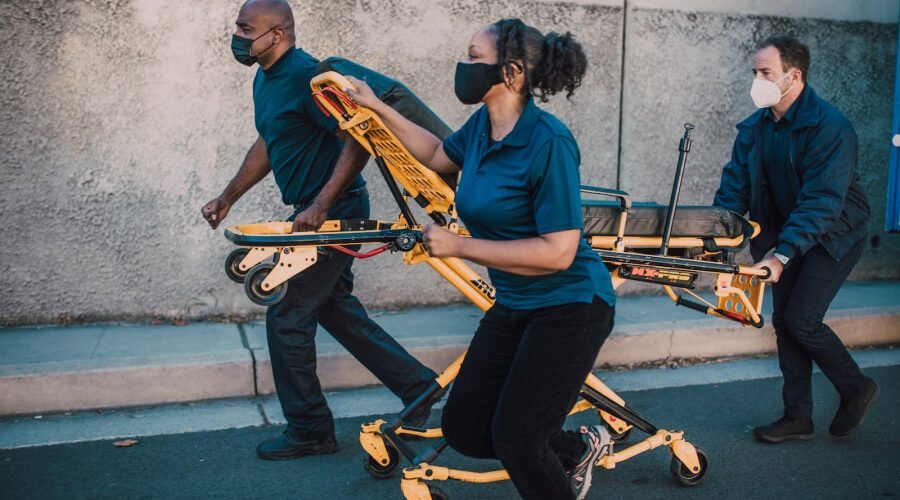Table of Contents
Overview of Medical Emergency Services
Medical emergency services is essential for protecting the health and safety of individuals who experience sudden medical issues. These services provide quick, professional care to those in need and can be the difference between life and death. This article provides an overview of what medical emergency services involve, how they work, and why they are important.
The most common type of emergency medical service for events is a 911 call centre or ambulance service. When a person calls 911 to report a medical emergency, operators will assess the situation and dispatch an ambulance or other appropriate medical personnel to the scene. The responders will typically arrive quickly in order to provide immediate care for the patient before transporting them to a hospital if necessary.
Ambulance crews are typically staffed by paramedics or Emergency Medical Technicians (EMTs). Paramedics have advanced training that allows them to administer medication, start intravenous lines (IVs), use defibrillators (AEDs), perform intubation procedures, bandage wounds, splint broken bones, monitor vital signs such as blood pressure and heart rate, give oxygen therapy if needed, stabilize spinal injuries with neck braces and backboards when necessary; all while transporting patients safely from one location to another.
Types of Emergencies Requiring Immediate Care
When it comes to medical emergencies, time is of the essence. Knowing which types of emergencies require immediate medical attention can help save lives. Here are some of the most common types of medical emergencies and what you should do if you or someone else experiences one.
- Cardiac Arrest
is a condition in which the heart suddenly stops beating normally and requires urgent medical care to restore a normal heartbeat and breathing. If someone experiences cardiac arrest, call 9-1-1 immediately and begin CPR if trained while waiting for help to arrive.
- Stroke
A stroke occurs when blood flow to a region in the brain stops, causing brain cells to die off due to a lack of oxygen and nutrients. Symptoms include sudden numbness on one side of the body, difficulty speaking or understanding speech, confusion or disorientation, dizziness or loss of balance, vision problems on one side only, severe headache with no known cause, and/or difficulty walking or standing up straight. If any signs point toward a potential stroke call 9-1-1 right away as treatment must begin as soon as possible for the best outcome results.
- Severe Allergic Reactions
range from mild irritation to severe anaphylaxis requiring immediate emergency care.
Common Symptoms of Emergency Conditions

Emergency conditions are health problems that require immediate medical attention and can become life-threatening. While every emergency is unique and requires individualized treatment, there are some common symptoms that should prompt you to seek medical help right away.
One of the most common symptoms of an emergency condition is chest pain or discomfort. This includes pain in your chest, arms, shoulders, neck or jaw that lasts for more than a few minutes or goes away and comes back again. It can feel like pressure, squeezing, fullness or burning in the chest area and may be accompanied by shortness of breath, nausea, dizziness or sweating.
Another symptom to watch out for is difficulty breathing. If you’re finding it hard to draw a full breath—even when resting—it could be due to a serious underlying condition such as an asthma attack or heart attack and needs urgent attention from a doctor. Other signs can include rapid breathing (more than 20 breaths per minute), wheezing sound when exhaling air from the lungs and feeling tired even after minimal physical activity.
Fainting spells are also indicative of an urgent medical problem requiring emergency care especially if it’s accompanied by confusion or seizures afterwards. Abnormal bleeding—including heavy menstrual bleeding.
Benefits of Using Medical Emergency Services
When a medical emergency arises, it is essential to get help quickly. Emergency medical services provide a vital service in these situations, providing rapid response to medical crises and getting the patient to the right care facility as soon as possible. In addition to this, there are numerous other benefits of using medical emergency services.
They can provide life-saving care before arriving at the hospital. Medical emergencies often require immediate attention and treatment that can be administered by trained personnel before professional medical staff arrive on the scene. Emergency medical technicians (EMTs) have received special training in providing pre-hospital care and can perform interventions such as cardiopulmonary resuscitation (CPR), defibrillation, administration of oxygen or medications, wound dressing or immobilization of broken bones. This is particularly important when time is of the essence; EMTs can arrive on the scene within minutes and begin stabilizing patients until they make it to a hospital for further treatment if necessary.
Using emergency services allows for quick diagnosis and transport of patients with serious illnesses or injuries that require specialized attention at an urgent care facility or trauma centre for more advanced treatment options beyond what an ambulance crew could provide on their own. This helps ensure any potential delays in responding are minimized.
How to Access Medical Emergency Services
In the event of a medical emergency, accessing medical emergency services is essential for receiving timely and appropriate care. Knowing how to access these services can help ensure that you receive the care you need quickly and safely.
One way to access medical emergency services is by calling 911 or your local emergency number. When making this call, be sure to provide as much information as possible about your condition and location so that the operator can send help to the right place. It is also important to stay on the line until assistance arrives so that any additional information can be provided if needed.
Another option for accessing medical emergency services is visiting an urgent care centre or hospital Emergency Department (ED). Urgent care centres typically provide treatment for non-life-threatening conditions such as minor cuts, sprains, strains, and illnesses like colds or flu. On the other hand, EDs are equipped with more advanced equipment and often offer higher levels of specialized care in case of serious injuries or illnesses that require immediate attention—such as heart attacks or strokes. If you cannot make it to a doctor’s office due to an illness or injury but don’t feel like your situation requires a visit to an ED.
Conclusion
In conclusion, medical emergency services are a vital component of the health care system in any country. These services provide relief, treatment and transport to individuals who are facing life-threatening situations. In addition, they contribute to reducing mortality rates by providing rapid response times and effective treatments. Although medical emergencies can be unpredictable, having access to reliable emergency services is essential for ensuring the safety of both patients and healthcare professionals.





